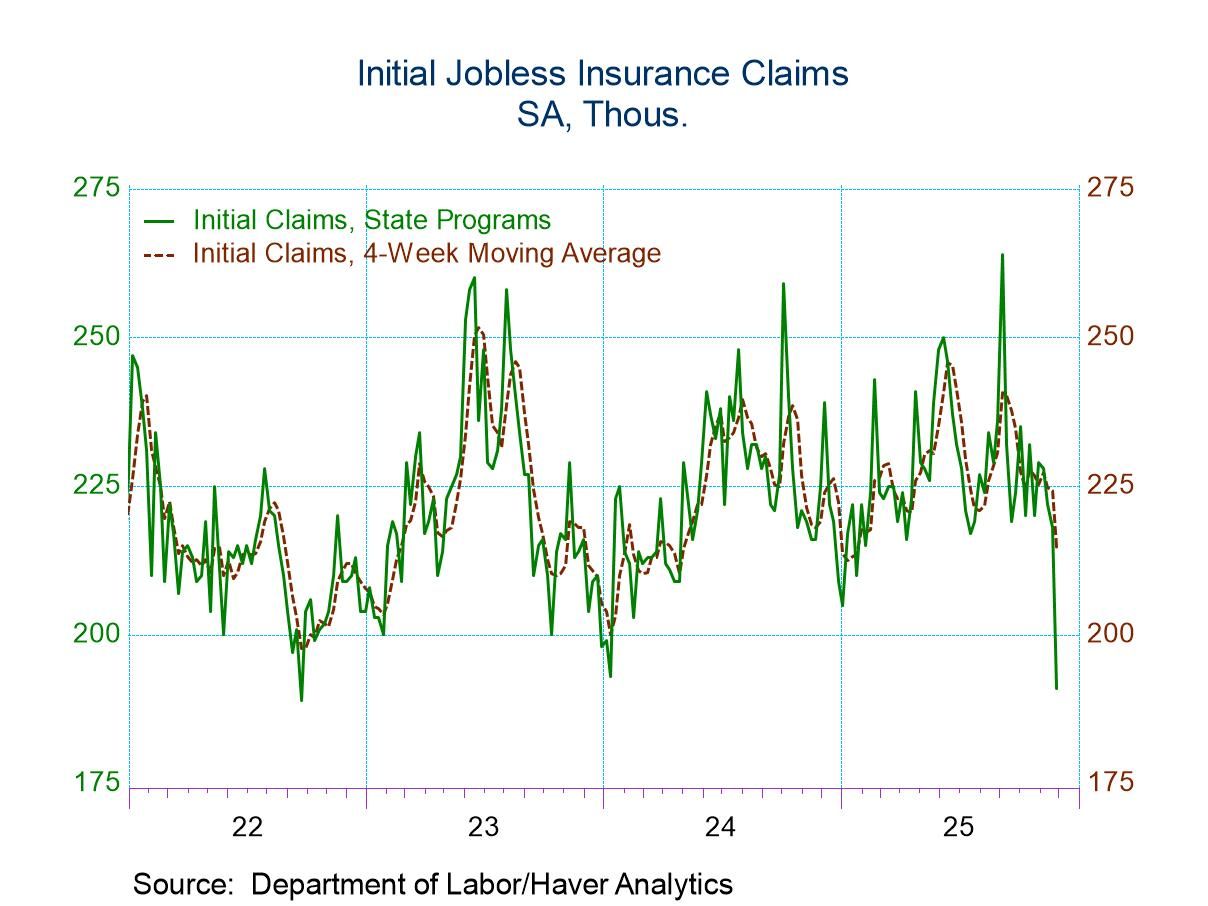NABE GDP Forecasts In 2025 & 2026 Are Raised
by:Tom Moeller
|in:Economy in Brief
Summary
- Consumer spending growth increased.
- Business investment growth also increased.
- Price inflation expectations reduced.
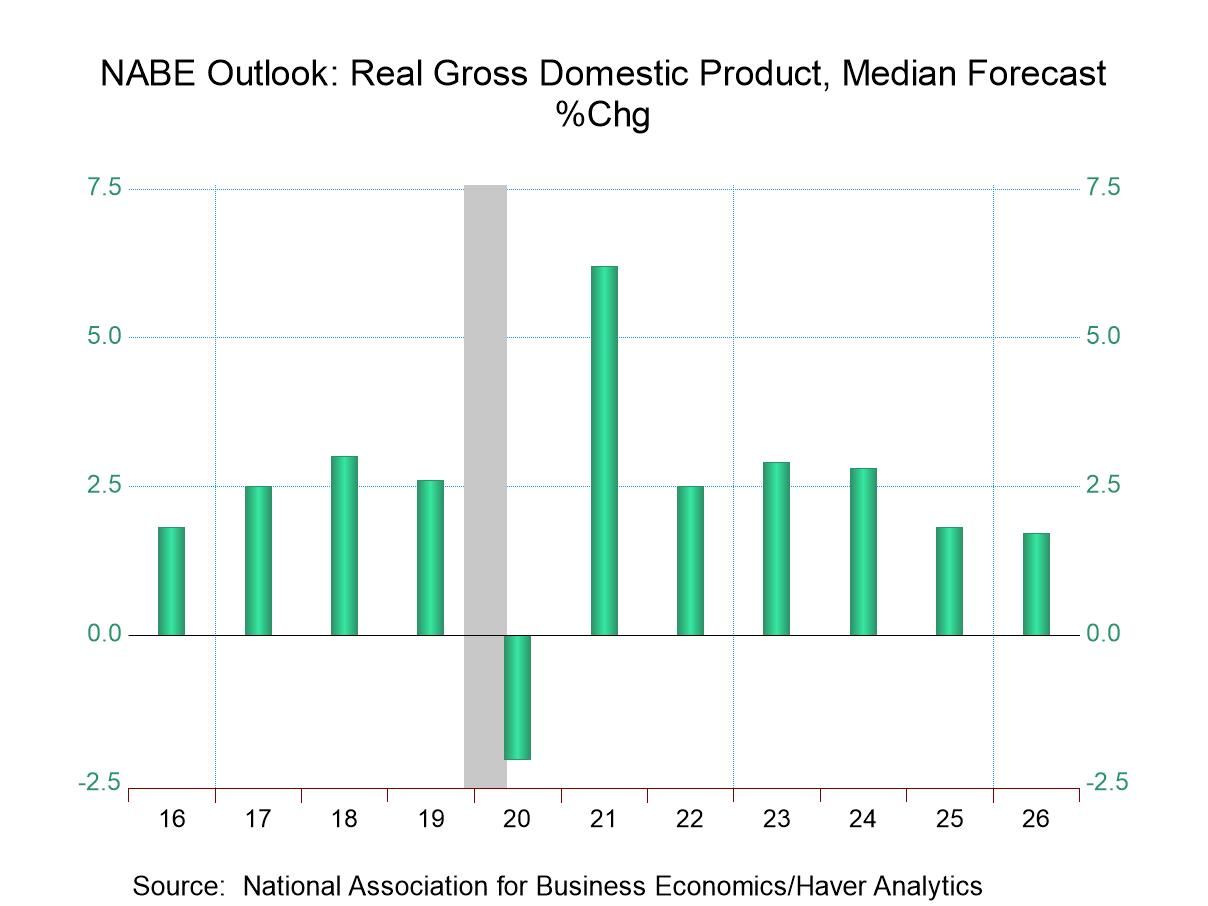
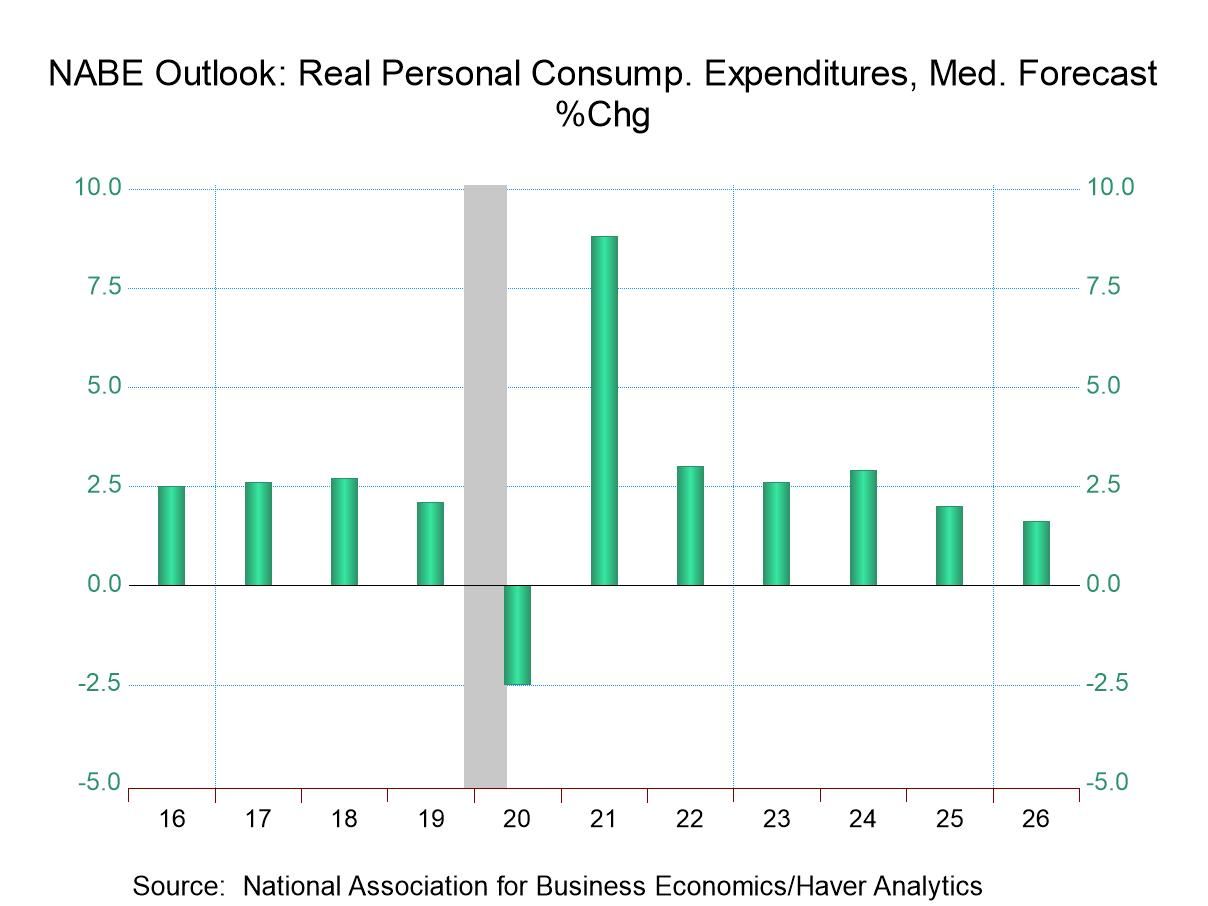
The National Association for Business Economics expects that following 2.8% growth in 2024, real GDP growth will slow to 1.8% this year, revised from 1.3% in the June survey, and 1.7% in 2026, revised from 1.4%. Growth from Q4-to-Q4 is expected to slow to 1.3% in 2025 from 2.4% in 2024, then improve to an 1.9% next year. Quarterly GDP is expected to grow 1.0% in Q4’25, 1.5% in Q1’26, by 1.9% in Q2 then by 2.0% in both Q3’26 and Q4’26.
Expected real growth in personal consumption expenditures in 2025 was lessened to 2.0% from 2.3%, and raised to 1.6% from 1.4% in 2026. The projection for business fixed investment growth was increased to 3.8% this year from 1.9%, followed by 1.7% growth in 2026, revised from 0.9%. An expected 1.6% decline in residential fixed investment this year was reduced from +0.5%, followed by 0.4% growth in 2026, which was little revised. Government spending growth of 1.3% this year was unchanged, and 0.9% growth in 2026 was little changed from the 0.5% improvement expected earlier.
The net export deficit is expected to widen to $1.113 trillion in 2025, revised from $1.204, then narrow to $1.024 trillion in 2026, revised from $1.085 trillion expected earlier. Exports should increase 0.9% this year, revised from 1.1% expected earlier, then 1.1% in 2026, revised from 1.6%. Imports are projected to rise 2.8% in 2025, revised from 1.1%, then fall 1.2% in 2026, down sharply from +1.6% as expected earlier. Inventory accumulation should ease this year to $40 billion, revised from $55.0 billion, down from $43.5 billion in 2024, then slow to $34.0 billion in 2026, revised from $40.0 billion in 2026 expected earlier.
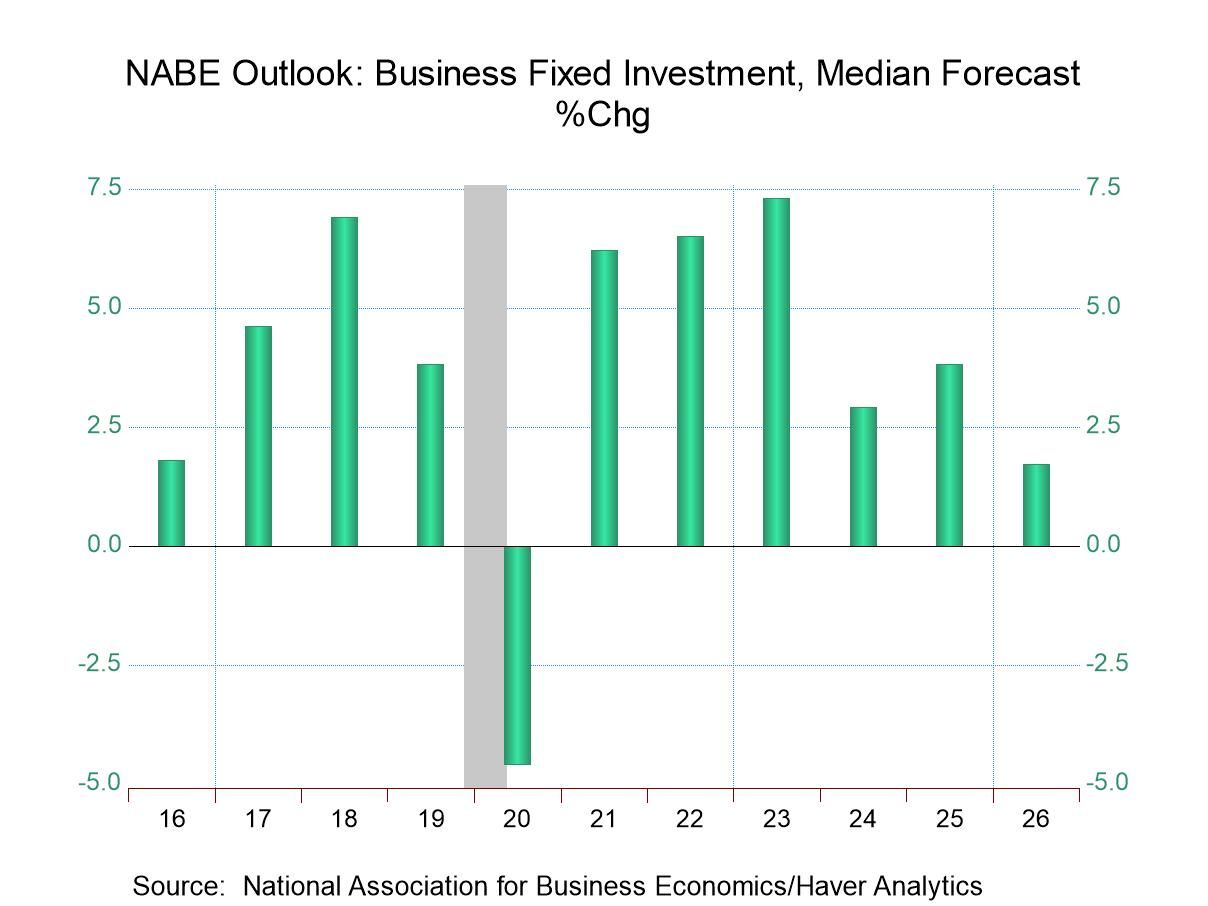
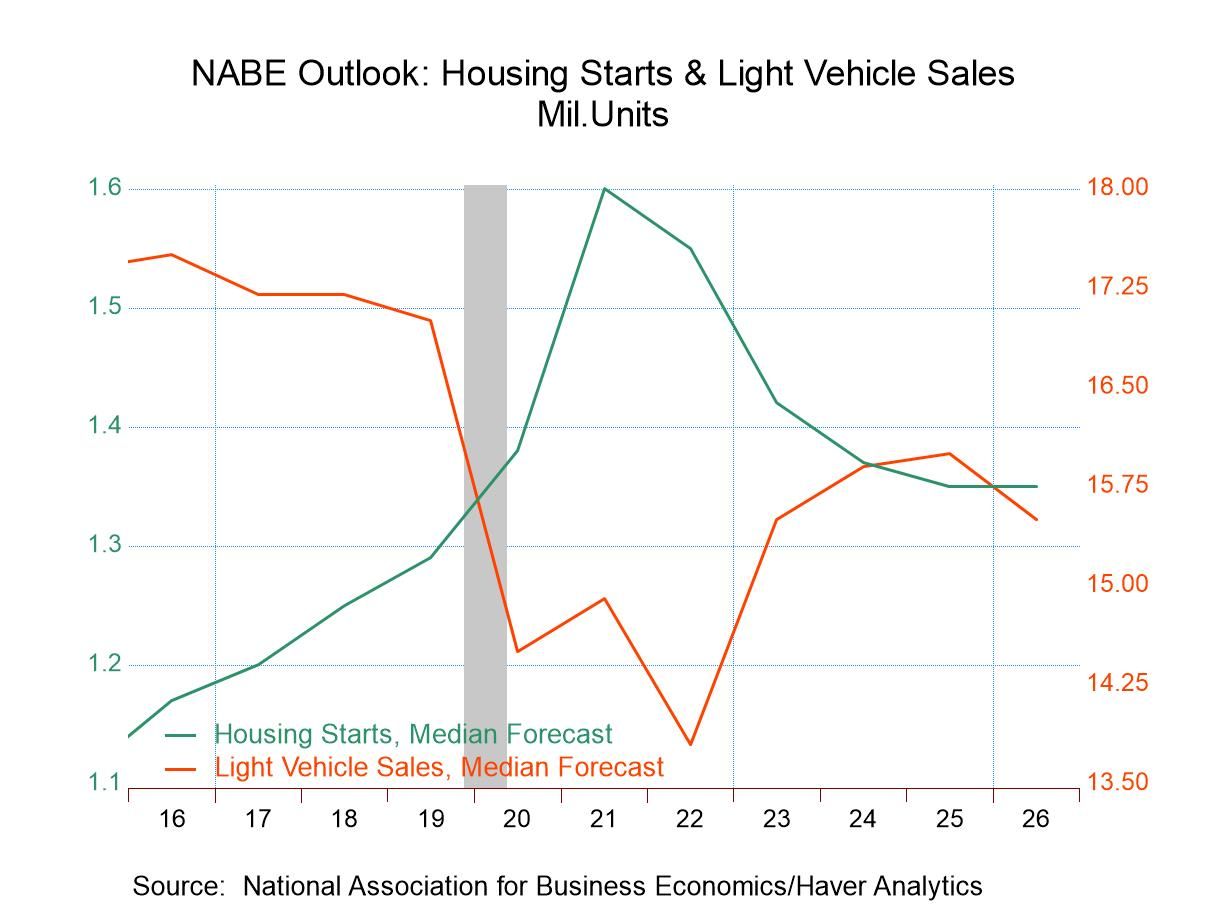
Housing starts are expected to ease to 1.35 million this year, revised from 1.36 million, then hold steady at 1.35 million in 2026 in 2026, revised from 1.39 million. They have been trending lower since the 2021 peak of 1.60 million. Light vehicle sales should stabilize this year at 16.0 million units, revised from 15.5 million, then ease to an unrevised 15.5 million next year. The average gain in payroll employment should weaken to 62,000 per month in the current year, revised from 91,000, then rise to 74,000 in 2026, revised from 99,000. The unemployment rate expectation in 2025 has been reduced to 4.2% from 4.4% projected earlier, but is now expected to rise to 4.5% in 2026, revised from 4.7%.
Inflation pressures are expected to eventually abate. After falling in 2024 to 2.7% (Q4/Q4), the increase in the CPI is forecast to first rise to 3.0% this year, revised from 3.4%, then stabilize at an unrevised 2.6% in 2026. These increases compare to a 7.1% rise in 2022. Price inflation, as measured by the PCE chain price index, is expected to rise to 3.0% in 2025, revised from 3.1%, then fall to 2.5% in 2026, revised from 2.3%. It hit 6.0% in 2022. The gain in the chain PCE price index excluding food & energy is projected to rise to an unrevised 3.1% this year, then fall to 2.5% in 2026, revised from 2.4%. The index rose to its high of 5.2% in 2022. The projected cost of crude oil of $64 per barrel at the end of this year is little changed from the last projection. The $64 per barrel at the end of next year compares to $68 expected earlier versus $70 per barrel at the end of 2024.
Interest rates on a 10-year Treasury note are expected to ease. The forecast of 4.14% for the ten year Treasury note at the end of this year compares to 4.19% expected earlier, and with 4.08% at the end of next year, compared to 4.00% previously projected. The Fed is expected to continue its easing of monetary policy. The Federal funds rate is forecast to be 3.87% at the end of 2025 versus 4.38% at the end of 2024, then fall to 3.13%, revised from 3.38%, by the end of 2026. After-tax corporate profits are predicted to rise 3.9% this year, revised from 2.1%, and 2.9% next year, revised from 3.3%.
The figures from the latest NABE report can be found in Haver's SURVEYS database.
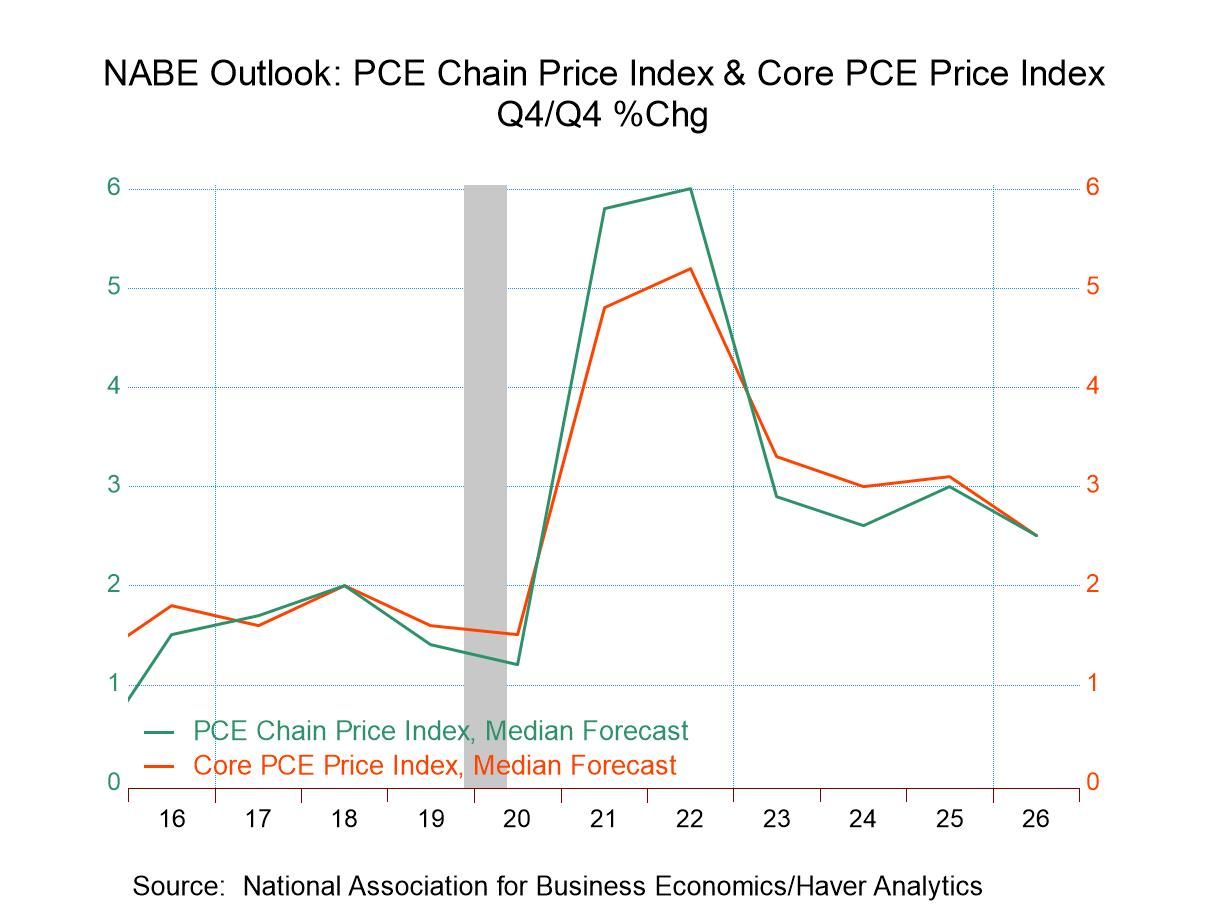
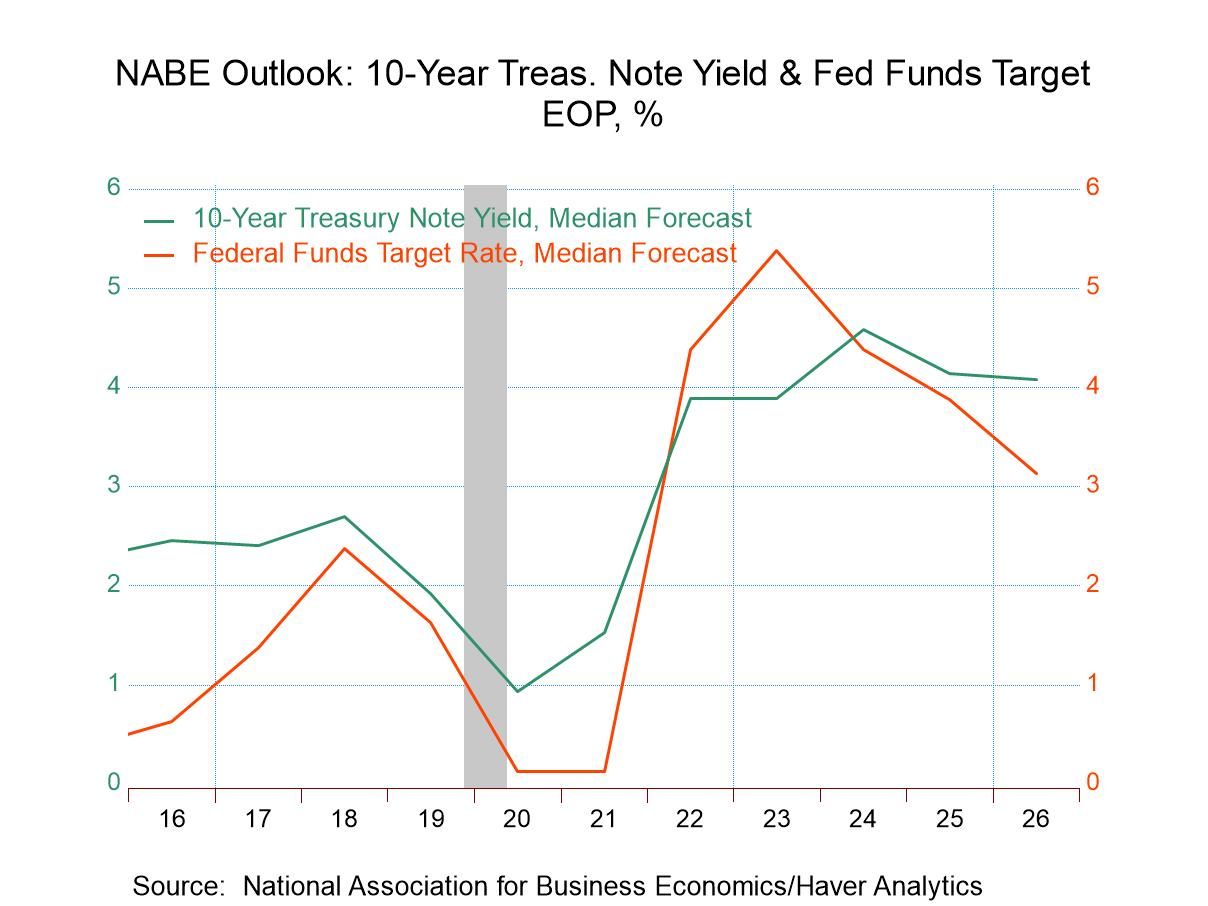
Tom Moeller
AuthorMore in Author Profile »Prior to joining Haver Analytics in 2000, Mr. Moeller worked as the Economist at Chancellor Capital Management from 1985 to 1999. There, he developed comprehensive economic forecasts and interpreted economic data for equity and fixed income portfolio managers. Also at Chancellor, Mr. Moeller worked as an equity analyst and was responsible for researching and rating companies in the economically sensitive automobile and housing industries for investment in Chancellor’s equity portfolio. Prior to joining Chancellor, Mr. Moeller was an Economist at Citibank from 1979 to 1984. He also analyzed pricing behavior in the metals industry for the Council on Wage and Price Stability in Washington, D.C. In 1999, Mr. Moeller received the award for most accurate forecast from the Forecasters' Club of New York. From 1990 to 1992 he was President of the New York Association for Business Economists. Mr. Moeller earned an M.B.A. in Finance from Fordham University, where he graduated in 1987. He holds a Bachelor of Arts in Economics from George Washington University.


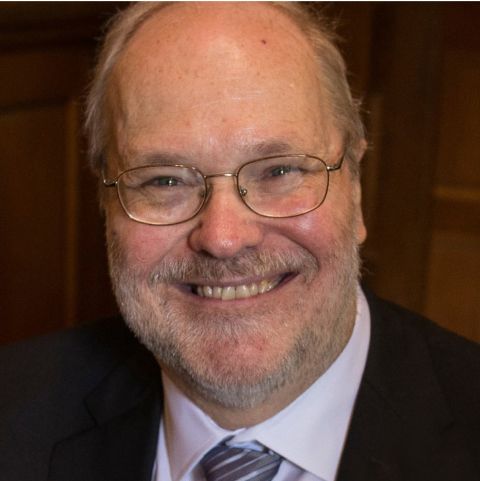
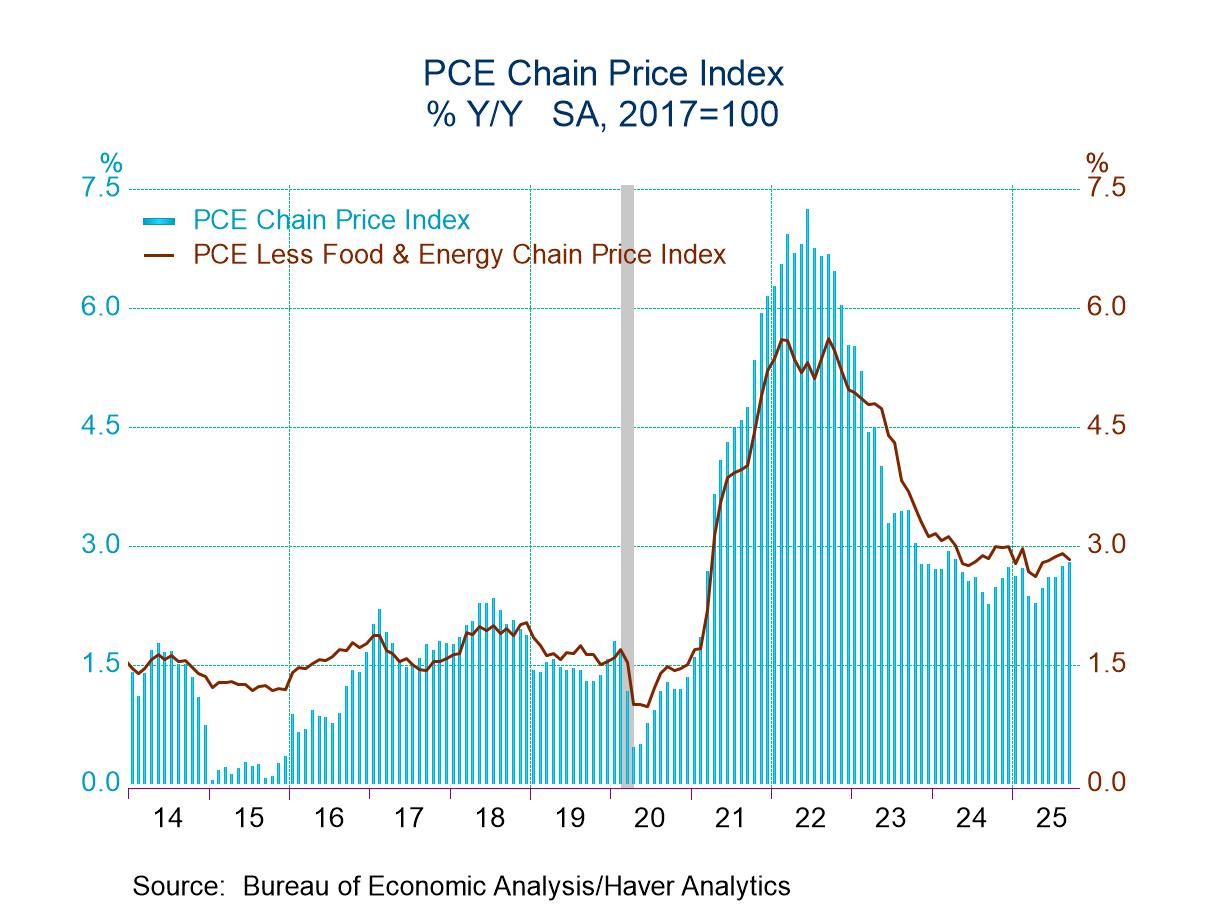
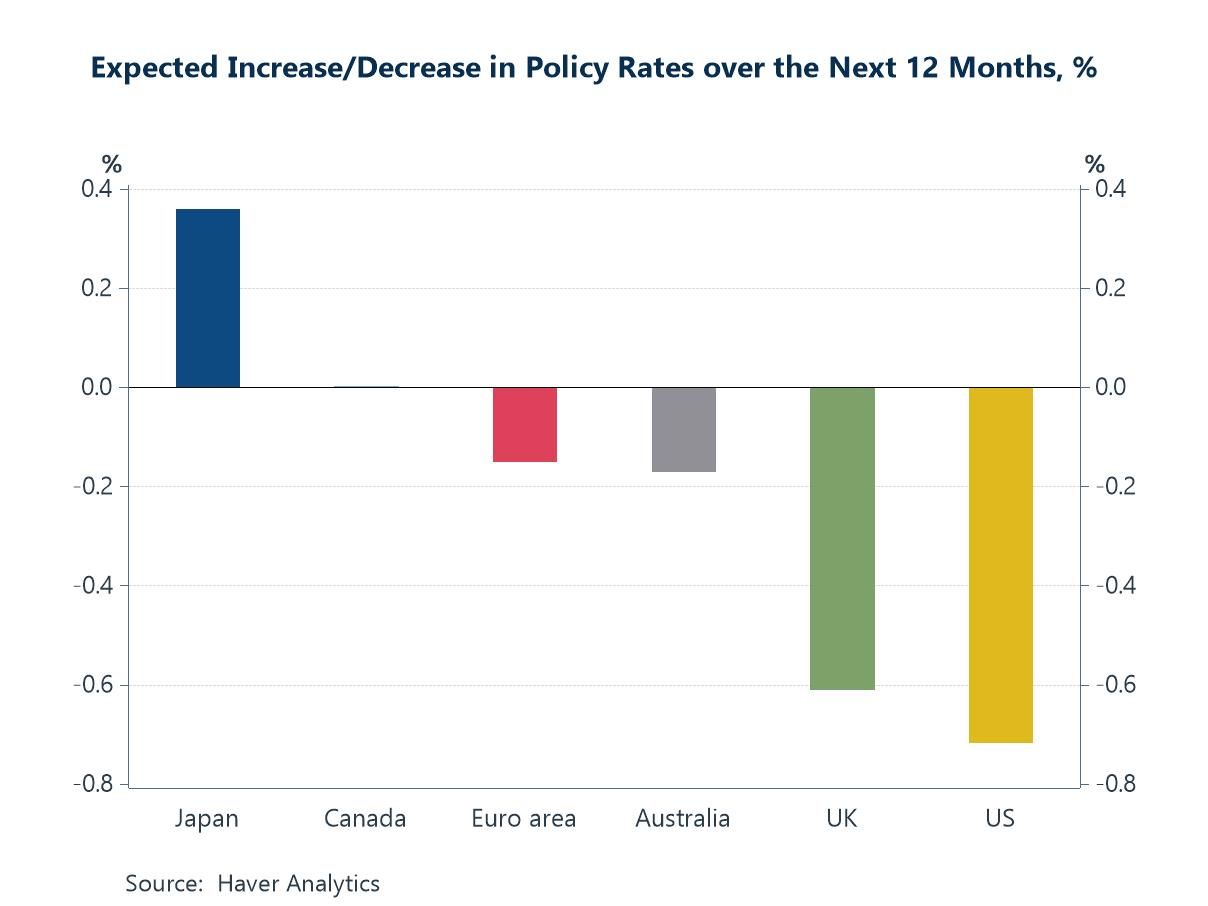
 Global
Global
